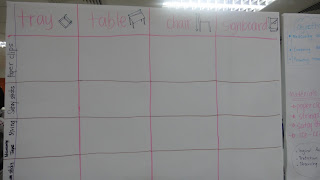All young children are problem solvers. As they explore and examine their world, they are attempting to find out how things work. When children involve themselves with various learning opportunities, real problems are posed, and children are guided to use the mathematical processes of reasoning, communicating, representing and connecting to solve them.
To promote problem solving, there must be provision of the environment, materials and experiences for solving problems. Early childhood educators should design the learning environment so it offers interesting problems and an array of materials for children to use in solving them.
It is interesting to read from this chapter that teachers may face the dilemma of how much to tell, when teaching problem solving. I have been caught in situations alike before when engaging children to problem solve, as I was then concerned with the time factor and only wanted to abide by the lesson duration. I was guilty at times then, for providing more information than I should as I was hoping that it would so much help them in deriving to a solution. And yes, I should be convicted for killing their rights to learning to problem solve..
Instead of offering solutions, teachers can help children state problems, provide time to listen and talk about the problems, and connect some of the problems occurring in their lives to mathematics learning. Of equal importance, young children learn powerful lessons when teachers model problem-solving strategies, convey the joys of finding solutions and acknowledge the frustrations during challenging moments (Copley, 2000).
Environment-based Task < To the Outdoors We Go! >

We planned for children to measure using different given items, compare the data collected, and involve themselves in teamwork. Children will engage in the process of observing, prediction and logical thinking.
Task:
Children are grouped into groups of four. Each group will be given one type of item as a measurement tool. Children will measure selected objects / furniture at Burger King. Record the data collected on a chart. The groups will compare their data collected.
A follow-up activity may include predicting the measurement of a longer or shorter similar object / furniture.
No comments:
Post a Comment